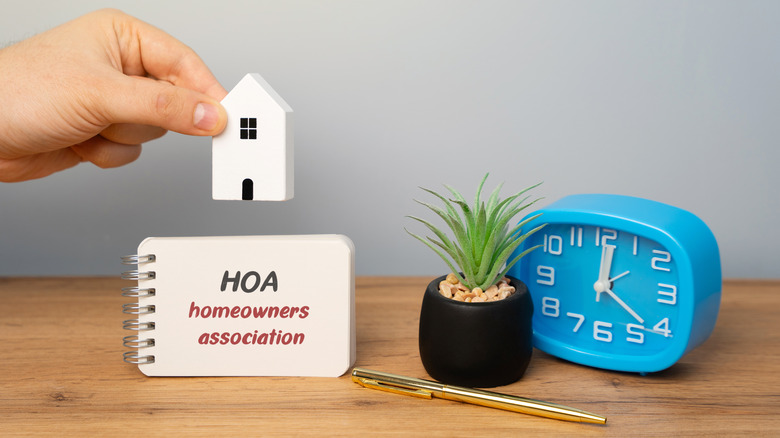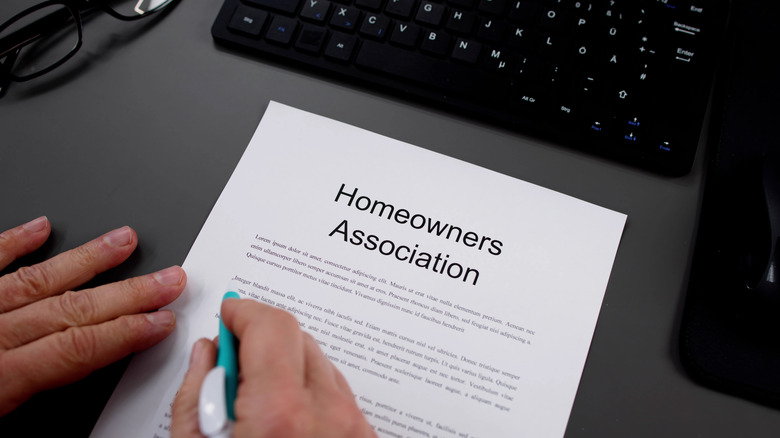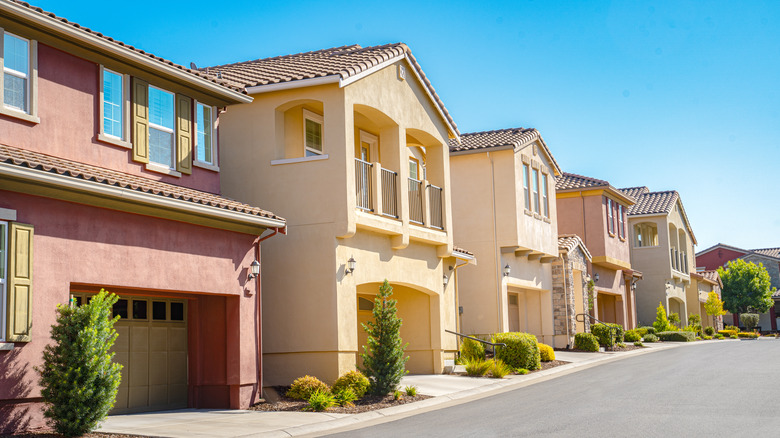Could HOAs Be On Their Way Out? Why This Bold Move May Be A Possibility Soon
Homeowners' associations (HOAs) could soon be on their way out, at least in Florida, if Rep. Juan Carlos Porras (R-Miami) gets his way. Porras told WCTV he is considering a bill to ban HOAs in the state of Florida. "I think homeowner associations are a failed experiment. It's just empowering a group of neighbors to have some sort of control over everyone else," Porras said.
A real estate HOA is a private group that handles the operations of the neighborhood. Comprising people who live there, the HOA creates rules for the neighborhood and maintains the common areas and amenities. The cost of this is covered by fees paid to the HOA. The regulations vary but may include restrictions on paint colors, fences, sheds, and even pets.
Florida has the largest percentage of homes that are under a community association of any state in the country. As of 2024, about 44% of homes in the state are part of a community association, according to the Foundation for Community Association Research. This includes homeowners' associations, condominium communities, and cooperatives. By contrast, around 34% of homes nationwide are part of community associations. There are advantages and drawbacks to living under a homeowners' association.
Pros and cons of an HOA
The benefits of living in an HOA community include more amenities, less maintenance, and slightly higher property values. Some common amenities include pools, gyms, club houses, playgrounds, tennis courts, and golf courses. Most people would not be able to afford these perks without the HOA. The association also handles the maintenance and takes care of landscaping and snow plowing. And properties in neighborhoods with homeowners' associations sell for about 5% more than comparable homes outside an HOA, according to data from the Cato Institute.
However, the mandatory HOA fees are a common complaint. Depending on the community, owners have to pay either monthly dues or one lump sum at the beginning of the year. These fees increase with inflation, and additional assessments may be levied for larger projects.
The restrictions in the rules are another common complaint. In addition to restricting the colors you can paint your house or the type of fence you can have, there are many other ways the HOA could be affecting your backyard, such as the size of your holiday displays and the play structures you have for your kids. According to a survey by Rocket Mortgage, 57% of HOA residents dislike having an HOA.
Could HOAs be banned in the future?
Currently, no bill has been introduced to ban HOAs. Although state legislatures could introduce such bills, as Juan Carlos Porras is considering, it would be difficult to enforce because the HOA agreements are voluntary private contracts. While paying fees is mandatory, you have the option of not living in that community. So far, rather than outright bans, states such as Florida, California, North Carolina, and Minnesota are limiting the power of the associations.
As with living in an HOA, there are pros and cons to banning them. The advantages of doing away with HOAs would be reduced monthly costs, more control over how owners decorate their properties, and no more fines for breaking the rules. You could DIY a shed without HOA approval and not be subject to a fine. On the other hand, the neighborhood may not be as well maintained, and the costs of maintaining streets and common areas would fall to either homeowners or the municipal government.
Despite the wishes of detractors, getting rid of homeowners' associations may not be so easy. In 1970, there were only about 10,000 communities in the United States with community associations, according to the Foundation for Community Association Research. In 2024, that number had grown to more than 369,000. But while the number of HOAs has grown substantially, the tide may be turning. According to the National Association of Home Builders, the share of new homes in community associations is slowly but steadily declining. In 2020, 67.1% of new homes were in a community association. That number declined to 65.5% in 2021 and 62.6% in 2022.


